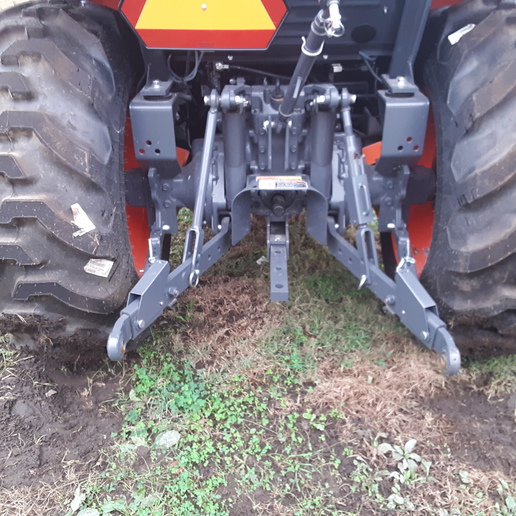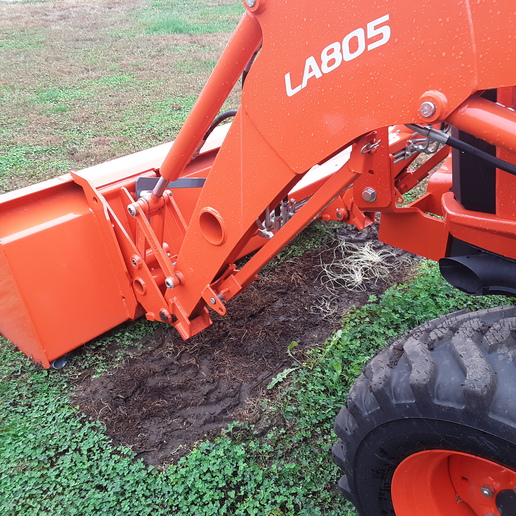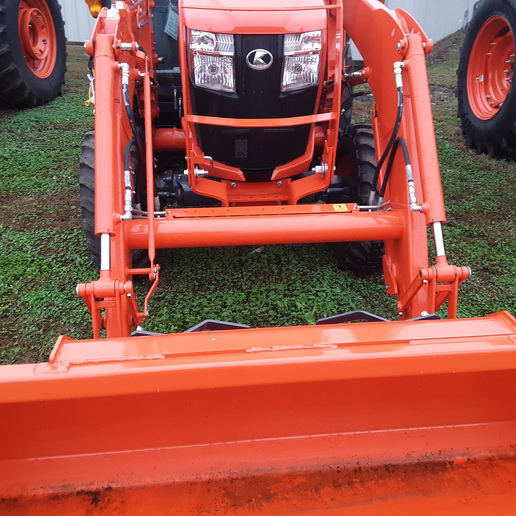You should upgrade or use an alternative browser.
- Thread starter Geo-TH,In
- Start date
grandpa Love
Well-known Member
kcm.MN
Well-known Member
- Location
- NW Minnesota
If'n I was securing it, it'd be my tractor. So guess I ain't gotta worry about it. *lol*
I'd run a chain and load binder to each axle, plus another chain and binder for the loader. Loader bucket would be facing down.
John Eatwell
Member
BarnyardEngineering
Well-known Member
- Location
- Rochester, NY
Jim.ME
Well-known Member
- Location
- central ME
Crazy Horse
Well-known Member
kcm.MN
Well-known Member
- Location
- NW Minnesota
(quoted from post at 11:41:18 10/30/19) Some real funny guys here today so here goes ..... start with 3 dozen heavy duty bungee cords made in China.
In Texas, those are called rubber bands. *lol*
Tractorcedric
Member
- Location
- Garland. Utah
Traditional Farmer
Well-known Member
- Location
- Virginia
Traditional Farmer
Well-known Member
- Location
- Virginia
Geo-TH,In
Well-known Member
I'm finding the responses to be a little funny. Everyone condems how I do things, calling them death machines, yet I don't really see a good solution offered.
I will use chains and 2 inch ratchet straps 2, not from HF. My ratchet straps are rated stronger than 3/8 grade 70 chain. Tractor will be secured like everything I haul using 8 different tie points. One time I almost flipped trailer and terramite didn't come loose.
geo
Jim.ME
Well-known Member
- Location
- central ME
geo,
The three point arms may need to be up or down, and there is nothing in the picture you asked about on the arms. Interferences are a reason I mentioned possibly having the tiedowns under the tractor. The reality on anything you are securing is; you need to physically be hands on with it on the trailer to see where you can connect, it changes with trailers due to different anchor points and positioning on the trailer. Cross chained, pulling down at about a 45 degree angle with 4 chains is the generally accepted basic starting point for hauling rubber tired equipment in my experience. Additional chains, and straps where appropriate, added as needed to meet weight and size regulations. A tractor as new as this one may have tiedown info in the operator's manual and/or may have a tie down kit option for it which might be handy to add if it was going to be transported regularly.
Over the years I have helped drivers secure many loads and will say I have seen the same piece of equipment chained down differently by different drivers and they all got through DOT checks with no problem. Outside of recommending you replace your bolts with hooks, I expect you will likely get by for what, and where, you are hauling without a problem if you tie down as you have been.
Best regards,
Jim
john in la
Well-known Member
Traditional Farmer
Well-known Member
- Location
- Virginia
rustyfarmall
Well-known Member
(quoted from post at 11:07:02 10/30/19) A clevis on the draw bar with chain pulling back. I chain on the front loader bracket pulling forward and a chain over loader to hold bucket down.
BINGO!!! I've hauled a few like that, and that is how I did it.
john in la
Well-known Member
The rule is there to prevent people from tying down a backhoe tractor at the bucket on the rear.
So the tractor needs tying down independently from any attachments.
Adirondack case guy
Well-known Member
Loren
Traditional Farmer
Well-known Member
- Location
- Virginia
Geo-TH,In
Well-known Member
What do you mean, "Chain over drawbar?
Look at first pic. All I see is a tounge in a fixed position, no drawbar that would allow you to move tongue. Would a clevis attached to tounge work?
"Chain thru tube of loader pulling back." Aren't there 4 hydraulic pipes in loader tube?
So, are using just 2 chains, one in back and one in front. Then how many straps to hold front bucket down? Would a strap over loader arms work or does strap actually have to go over bucket?
Thanks
Geo
Geo-TH,In
Well-known Member
Don't think it would fit in my 10k dump trailer. Wouldn't want to even to consider it.
geo.
On the rear... a chain through the holes between the rim and center will keep the rear in check. It the wheels stay, the tractor stays... big clevis on swinging drawbar would be second choice.
On the front, a chain over the front axle, under the engine, and back over the other side and too the front again.
And for good luck a chain over the bottom bucket mounts would be the extra good luck charm.
Also add one more chain than needed.
I have a twisted clevis on the drawbar and a straight clevis mounted
on a plate under the radiator. I think it weighs around 2000-2250
with loader. I use two 1/4" grade 70 chains, one in front, one
in rear. But then rarely travel over 30 miles with it and I don't have
to scale it because I'm under 26,000#.
I had not heard of running a chain thru the loader tube before,
but that's a great idea.
kcm.MN
Well-known Member
- Location
- NW Minnesota
Depends on how you're routing the chain. I would use one chain for each wheel. Chain drops over tire and onto axle, then gets torqued with binder.
"...[i:e68d848668]and interfer with anything attached to 3 pt[/i:e68d848668]."
In the photos, there is nothing attached to 3-pt. You didn't specify anything different.
Before I get to the bucket, let me clarify my method:
Each chain would be pulling each wheel/axle down and to the side of trailer, effectively anchoring each wheel to the trailer decking.
"[i:e68d848668]Chaining to front axle will cause a problem cross cross bracing[/i:e68d848668]."
That's why I would also tip bucket down, then chain the bucket so that it, too, is held tightly to the trailer.
If in an accident, I would want my tractor destroyed while attached to the trailer, rather than it coming loose at some point and becoming a very heavy projectile.
I like to over-do things, and I have LOTS of 2" x 27' ratchet straps, so I would also likely use 3 or 4 straps in addition to the chains. By the way, my chains are 5/16" Grade 70. Also have (1) 3/8" and (2) 1/2", but rarely ever need them.
Anyway, slim chance I'll ever have any tractor that new, and they likely won't come with any owner's manual *lol*
Nice-looking machine George!
flying belgian
Well-known Member
caterpillar guy
Well-known Member
As for straps being stronger than a 3/8th's 70 chain you must be buying something special for straps. Would like to see that. The 2 inch ones I see are 3300 wll breaking at 10,000 and the 4 inch ones are only 5400 wll breaking at 16,200 but the wll is the needed figure. 3/8 70 chain is a 6600 wll and higher breaking 26,400. SO I call BS on the strap being stronger than a 3/8 70 chain.
Hobo,NC
Well-known Member
- Location
- Sanford, NC
Frond add D-rings, rear a clevis and another way I can not find the pix. I made a draw bar for 3 point with two D-rings.
Loader, I have a 1" bar thru the tube on the loader I have not refined it yet to my like'n...



Hobo,NC
Well-known Member
- Location
- Sanford, NC
Similar threads
- Replies
- 23
- Views
- 803
- Replies
- 1
- Views
- 145
- Replies
- 4
- Views
- 443
We sell tractor parts! We have the parts you need to repair your tractor - the right parts. Our low prices and years of research make us your best choice when you need parts. Shop Online Today.
Copyright © 1997-2024 Yesterday's Tractor Co.
All Rights Reserved. Reproduction of any part of this website, including design and content, without written permission is strictly prohibited. Trade Marks and Trade Names contained and used in this Website are those of others, and are used in this Website in a descriptive sense to refer to the products of others. Use of this Web site constitutes acceptance of our User Agreement and Privacy Policy TRADEMARK DISCLAIMER: Tradenames and Trademarks referred to within Yesterday's Tractor Co. products and within the Yesterday's Tractor Co. websites are the property of their respective trademark holders. None of these trademark holders are affiliated with Yesterday's Tractor Co., our products, or our website nor are we sponsored by them. John Deere and its logos are the registered trademarks of the John Deere Corporation. Agco, Agco Allis, White, Massey Ferguson and their logos are the registered trademarks of AGCO Corporation. Case, Case-IH, Farmall, International Harvester, New Holland and their logos are registered trademarks of CNH Global N.V.
Yesterday's Tractors - Antique Tractor Headquarters
Website Accessibility Policy





